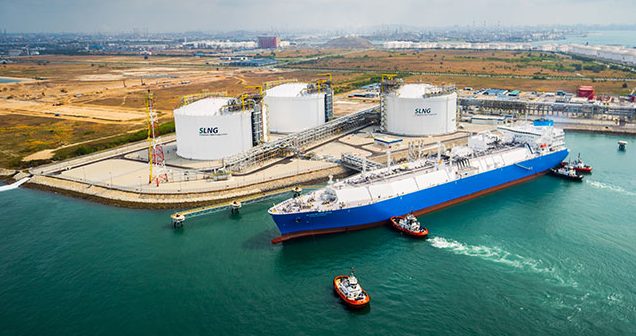Singapore LNG Corporation (SLNG) announced that it has successfully completed its first small scale LNG Gas-Up/Cool-Down and Reload, at its Terminal on Jurong Island. The operation was carried out on 18-20 June, for the newly built, 6,500m3, Cardissa, an LNG bunker vessel owned by Shell and co-financed by the European Union’s Connecting Europe Facility that will serve operators in Northwest Europe.
The operation was conducted at the SLNG Terminal’s Secondary Jetty, which is originally designed to accommodate LNG vessels from 60,000m3 to 265,000m3 in size.
Detailed compatibility studies were carried out in advance to ensure that the vessel could safely call at the jetty. Among other things, the compatibility studies involved checking whether the vessel’s equipment would be able to connect with the equipment at the Secondary Jetty, and the marine conditions needed to ensure that the operations could be conducted smoothly.
Prior to this, the smallest LNG carrier that had called at the SLNG Terminal for unloading or reloading was about 65,000m3 in size.
Commenting on this event, Mr John Ng, CEO of SLNG, said: “The successful completion of our first small scale LNG reload operation is significant as it demonstrates the SLNG Terminal’s ability to play the role of LNG supply hub for the region. The Terminal is able to break LNG cargoes into smaller parcels and facilitate deliveries of small volumes of LNG to other terminals in the region, or as bunker fuel to ships in our port.
Mr John Ng also informed that the company is looking within 2019 to further explore possible modifications to Secondary Jetty, for the accommodation of LNG vessels as small as 2,000m3.
Cardissa is a specialised 6,500 cubic-meter LNG bunker vessel capable of fuelling 1,000 cubes of LNG per hour. With a specialised loading arm, it can provide safe bunkering to a wide range of ships, from small coastal to large transatlantic ships. Shell claims to be the biggest seagoing LNG bunker vessel with high maneuverability that will open up a new market in the marine transport industry.




























































